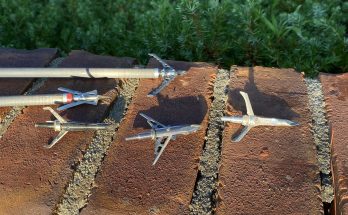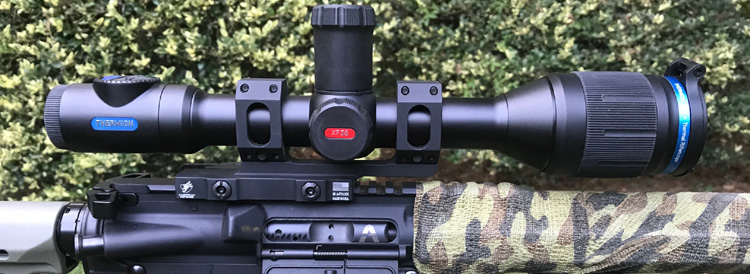
The Pulsar Thermion Thermal Scope series features a new look, high-performance thermal cores and competitive prices. The Pulsar Thermion has gone through some changes in models, so I want to show you videos of some of the Thermions we have tested in the last couple of years.
Below you will find more information about the Thermion Thermal Scope modes, but first I will show you videos of my reviews and hunts using all the Thermion models we have tested or owned.
Thermion 2 XP50 Thermal Rifle Scope

See our Christmas Gifts Suggestions For Hunters
Thermion XP50 Thermal Rifle Scope
Thermion XG50 Thermal Rifle Scope
Thermion XP38 Thermal Rifle Scope
Thermion XQ50 Thermal Rifle Scope
Pulsar Thermion Thermal Scopes Models
The first thing you will notice about the Pulsar Thermion is that it looks just like a regular rifle scope instead of a movie camera sitting on top of your rifle. Standard scope rings are used to attach it to your rifle, and it is just as easy to properly mount on a bolt action rifle as it is an AR platform.
Most thermal rifle scopes tend to be less than aesthetically pleasing and bulky. Pulsar has changed all of that with the new Thermion Thermal Rifle Scope Series. Thermions are built within a more traditional looking scope body that attaches with any brand of 30mm scope rings. The Thermion XP38 has a 32mm Germanium front lens with adjustable front focus, adjustable ocular lens and weighs 26 ounces. All of the electronics are housed within the tube and what looks like target-style windage and elevation knobs. It looks so much like a traditional target scope, most people will not recognize it as a thermal.
Thermion Thermal Scopes are available in three series with either a 640×480, 384X288 or 340×240 thermal core resolutions. The XP series offers the same high 640×480 thermal core resolution and a 17-micron pixel pitch that the Pulsar Trail XP series uses. The XM series offers a 320×240 thermal core resolution and a 12-micron pixel pitch. The XQ series offs a resolution better than the XM but not quite as good as the XP series
The scopes are available in several base magnifications and all have a 50hz refresh rates. They use the APS-2 Li-Ion battery Pack, are recoil rated up to .375 H&H magnum, IPX7 waterproof rated and Stream Vision App supported. The Thermion series is offered in two focal lengths options, 38 and 50mm. The series designations are not the size of the front lens. The lens diameters are 32 and 42mm respectfully. The Thermion XM30 model production has been halted.
Pulsar Thermion Scope Controls
The new Pulsar Thermion is more like a regular scope in more ways than just the shape. The layout of the controls is different than most thermal scopes. If you are new to thermal optics and have used traditional scopes with an adjustable objective lens, it will be an easy transition to the Thermion. If you are used to the controls of a Pulsar Trail, Helion or Flir product, you may not like the controls as well. The controls are not difficult to use – just different.
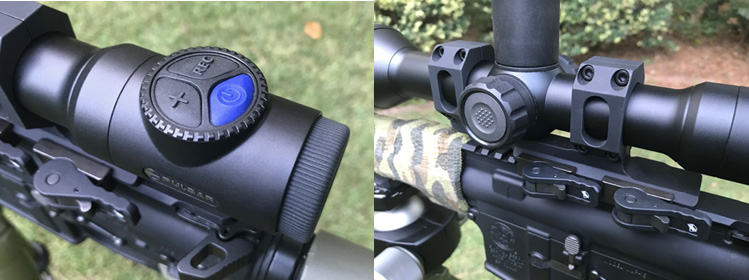
On top of the eyepiece are the controls for power, video recording, and magnification. They are laid out in a triangle grid within a small circle that makes it easy to operate at night for most users. If you have large fingers, you may find the buttons to be a little tricky. On the left side where turrets are normally placed on conventional scopes, you find the controller knob. All menu functions must be accessed through the controller knob. There are no buttons to toggle between white-hot to black-hot like other Pulsar scopes and scanners. Instead, the quick functions of the Thermion controller used while hunting access brightness, contrast, range estimation functions.
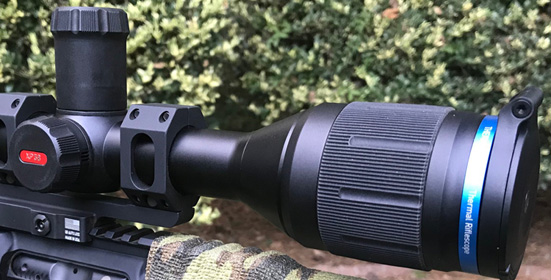
The focus ring is in the same place as a regular riflescope with an adjustable objective on the front of the scope. It has a wide rubber covered adjustment ring that is easy to access with the non-shooting hand, but pretty hard to turn. It is not as easy to access or use as a Pulsar trail or Trijicon that have a top-mounted focus button. The flip-up lens cover is made of hard plastic and does a good job keeping dust off the lens.
The removable battery and cable port are under the caps where the elevation and windage adjustments are normally located on conventional scopes. If your hunts last more than 4 hours, you may want to have a spare battery or external power pack. I keep an Anker PowerCore attached to my rifle stock for external backup power. It recharges the Thermion batteries as I hunt.
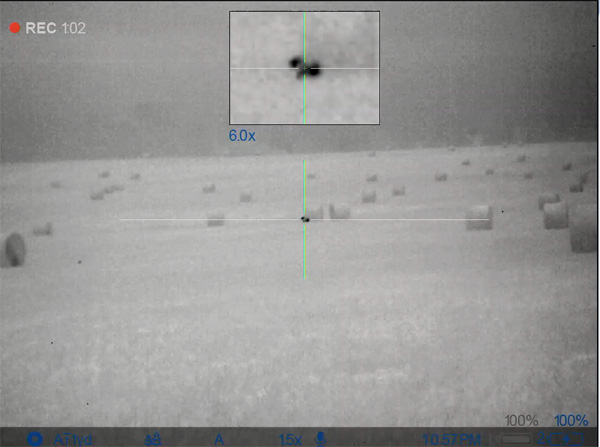
Pulsar Thermion XP38 Hunting

Doug stacked up coyotes and hogs like cordwood using the Pulsar Thermion XP38 1.5-12x. We hunted coyotes and hogs in wide-open fields, in wooded areas and on stands overlooking feeders at close range. The Thermion did a superb job in every situation. The lower base magnification and wide field of view made close-quarters hunting, like hunting over a feeder or in woods, much easier than with scopes with higher base power. The quality of the image let me bump up the digital zoom to take longer shots in open fields and see better in wooded areas to follow hogs walking through the trees and pick a clear shot.
The XP38 starts at a base power of 1.5X making it a great choice for hog hunters and most other predator hunting applications. You get excellent image quality and a wide field of view for follow-up shots. Because you are shooting at lower base power, focusing is not as critical for a good image. For coyote hunters who experience shots over 100 yards, you may want to go to one of the Themion models with higher base magnification.
When the XP38 model is zoomed from the base magnification of 1.5X to 3X, the resolution is cut back from 640×480 to 340×240. That is the same resolution as the XM38 on its base magnification of 4.2X. Your target will appear closer in the XM38 for more precise aiming with the same image quality as the XP38 on 3X.
Visit Outdoor Legacy to purchase a Thermion or other quality thermal optics. If you have questions, please call Jason Robertson at (877)350-1818.
Also please visit Outdoor Legacy on Youtube and HansETX for great hunting videos and thermal optic reviews.
If you’re looking for great reviews and commentary on the latest in the night vision and thermal industry be sure to tune into The Late Night Vision Show, a weekly podcast hosted by Jason Robertson and HansETX.

